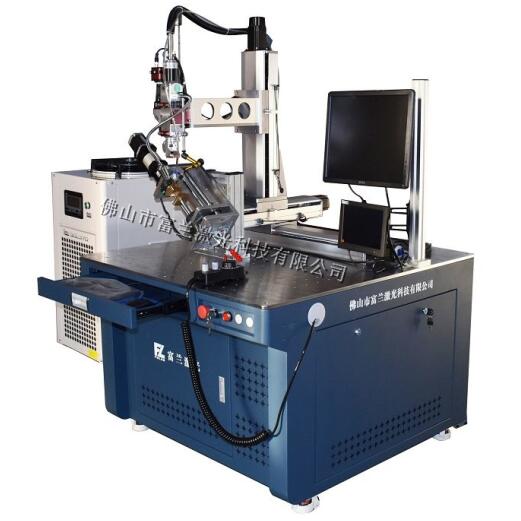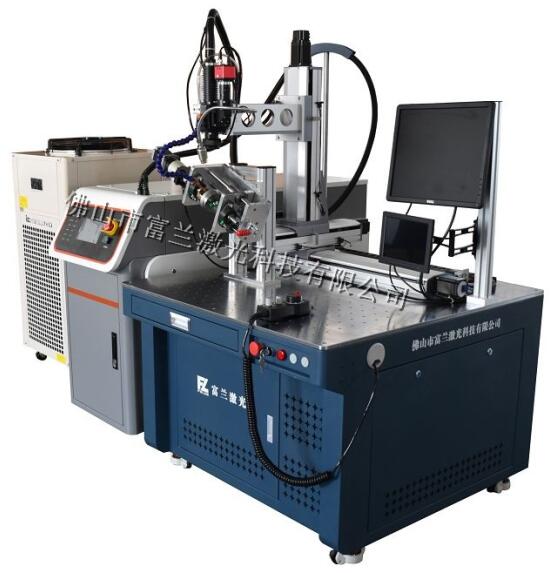

Foshan Fulan Laser Technology Co., Ltd.
National Hotline: 0757-29899345
Manager Wen: 18902563402
Fax: 0757-29899345
Business QQ: 2801827697
E-mail: china@fsfulan.com
Address: No.14, Leliu Port Intensive Industrial Zone, Shunde District, Foshan CityThe high-tech zone almond altar town, shunde, foshan city shun industry west road no. 15 cimc valley 20 9 / f, building B
When customers buy a laser welding machine, almost the first consideration is whether to choose pulse welding or continuous welding. Because this problem involves many factors such as cost, technology, processing quality, processing efficiency, light source, and later equipment upgrades, it has to be treated with caution. So, which is better, pulse laser welding machine and continuous laser welding machine?
Below, Foshan Fulan Laser will make some simple explanations on the principle of equipment, light source, beam characteristics, characteristics of respective welding processes and application conditions, for your reference.
1. Principle
Generally speaking, the laser beam will be output once back and forth in the resonant cavity, and the continuous back and forth (also called high-frequency oscillation) will form multiple outputs. When the output frequency reaches a certain critical value, we call it Continuous light emission, otherwise it is called pulsed light. The corresponding lasers are continuous lasers and pulsed lasers.

2. Laser light source
CW laser welding machines use fiber lasers in most cases. YAG laser is used for the pulse. Pulsed lasers are characterized by pulsed light, with low light frequency. A laser with a smaller power can emit ultra-high pulse energy. For example, a 500W pulsed laser can achieve a single pulse power of 12KW or even higher. In this way, the same is true. The welding penetration of high-power pulsed lasers is greater than that of fiber lasers. CW lasers are characterized by ultra-high light output frequency and relatively stable and low single pulse energy.
Fulan Laser gives you a simple analogy to illustrate the difference between them. Pulse welding is similar to piling with a pile driver. Although the speed is slow, each impact is extremely heavy, while continuous welding is like an electric hammer hitting a nail with very little force each time. , But the hammering speed is very fast.
Three, beam characteristics
The beam emitted by the continuous laser is a typical Gaussian beam, that is, the power density at the optical center is very high, and the power density decreases rapidly along the optical center. The intensity of the pulsed laser is flat-topped, that is, the energy is approximately evenly distributed on the surface perpendicular to the beam.
Four, welding process
Continuous welding has a very high frequency of light emission. If good welding protection and suitable welding parameters are adopted, a uniform and smooth weld can be obtained. This weld basically does not need to be polished or polished.
Due to the low frequency of pulse welding, clear and intermittent percussions can be heard during work, and the result is a flat fish-scale weld, which is somewhat similar to an argon arc welding weld, or if necessary, it will also be formed. Full single spot welding spot.
In the process of processing, continuous welding only needs to select the appropriate welding track, operating speed, power and other parameters, which is relatively simple, while pulse welding requires the pulse width, light frequency, single pulse power, operating speed and pulse. Comprehensive consideration of many parameters, such as waveform, is relatively complicated.
In addition, the energy density of the fiber laser beam at the optical center is very high, and with the current technical means, the laser beam can be coupled to an energy transmission fiber with a very small core diameter, so medium and high power light lasers are very suitable for deep penetration. Welding to obtain a weld with a large aspect ratio. The flat-topped distribution of the pulsed laser beam has a great advantage for heat conduction welding represented by thin plate splicing welding.
V. Application
CW lasers will continue to expand their market share in the future due to their high stability, low power consumption, high efficiency, extremely high beam quality and energy density. However, the YAG solid-state laser has a long development time and a huge market share, and there will be a lot to do in some special fields in the future.
Currently in the market, continuous welding is mostly used for deep penetration welding. With the continuous development of fiber laser technology and direct semiconductor laser technology, continuous welding will be applied to more fields. In addition, continuous welding processing with its extremely high efficiency and stability fits well with the current general trend of the manufacturing industry from manual and semi-automated production mode to intelligent and automated production.
The pulse welding market will continue to shrink in the future. Especially at this stage, fiber lasers have developed quasi-continuous lasers that can compete with them. However, YAG solid-state lasers are low in cost, simple to use and easy to maintain. Many special materials and special welding requirements require pulse welding, which will make pulse welding exist for a long time in the future.

Conclusion: Pulse welding has low efficiency and high use cost, but low cost and high single pulse energy; continuous welding has high efficiency, low operating cost, but high price. Both have their own advantages and disadvantages, and each has a different application range. How to choose the two welding methods is a question that needs to be considered comprehensively. Factors such as price, use cost, process requirements, and production efficiency should all be taken into consideration.
There is no best laser welding method, only the laser welding program that is most suitable for customers. Foshan Fulan Laser will strive to provide customers with the highest quality solutions, find the right welding method, and achieve a win-win situation!